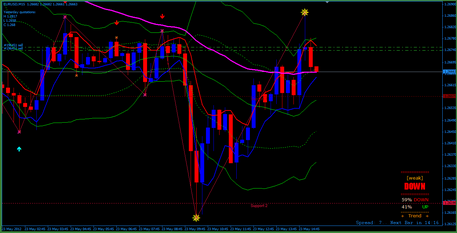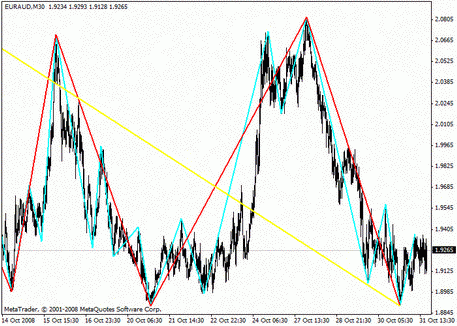
Levels of Support and Resistance
Thursday, 17 August 2017 23:36
Lines of support and resistance are the one of the foundations of technical analysis of the Forex market. They are used in a variety of trading strategies.
In general, these levels are the straight lines or curves connecting the maximum or minimum values of the asset. These lines show the price zones, in which traders don’t want to make deals at a certain price.
As a rule, the value of the asset rebounds from these boundaries, or, less likely, it breaks them. In this case, the trend resistance line becomes the support level.
Principle of Formation
All the processes occurring on the chart are a consequence of the traders’ actions. There are always two types of traders on the Forex market: bears and bulls. Bears sell the asset, and pull the cost down. Bulls, in turn, buy the asset, and push the cost to grow.
These processes are described by the relationship between the supply and demand.
If the supply of an asset grows, it causes a decrease in value, and vice versa. If the demand for an asset grows, this causes an increase in the price. Every minute, millions of traders from around the world trade on the Forex market, providing a turnover of more than $ 5 trillion a day. Obviously, in such conditions, traders often act the same, especially considering that the variety of technical tools isn’t so wide.

- Support levels, located below the price chart, indicate the area where traders expect the demand to exceed the supply. As a result, a great demand is really formed at such levels, and as soon as the price approaches it, the market participants begin to buy the asset. It’s also worth noting that the lower is the price approaching such a mark, the bigger is the demand for the asset, since traders are interested in buying at a low cost. Accordingly, the growth in demand causes a rise of the value, which looks like a price rebound from the level of support on the graph.
- The resistance lines are located above the asset value, and show the zone where the supply is much higher than demand. As soon as the price approaches such a mark, traders start selling the asset, as its value is high enough. The closer is the graph to the line, the more sellers enter the market. At the same time, the interest of buyers is dropping. Accordingly, after the fall in demand, the price rolls back in the opposite direction.
Levels in Trade
There are many different strategies that are based on two main approaches: trading on the breakdown of levels, and trading on the price rollbacks from the boundaries of the channel.
- Within the rollback from the support line, long positions are opened, with the Stop Losses located under this mark. Similarly, rolling from the resistance line, a short position opens with a Stop Loss above this level.
- Trading on the breakdown, the deals are opened at the moment when the price crosses the resistance and support lines in the direction of the trend movement.
It’s worth noting that the breakdown of such lines may be false, so the graph returns back to the channel. In any case, as a rule, the value of the asset doesn’t break through the levels with one sharp impulse, but tests it again before entering a new trend. This fact must be taken into account to avoid losses.
Pay attention to the variety of level types. There are many indicators that calculate these areas according to different principles. Test the tools on demo accounts, and find the ones that are the best for you.
Share
Related articles
- Previous article: Murrey Levels - Application of the Murrey Levels Indicator
- Next article: Trend Acceleration - the Key Strategy Rules

 English
English
 русский
русский



